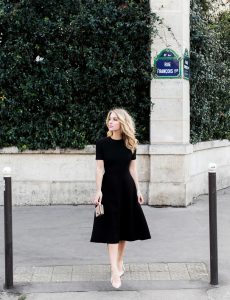When I was young, I always assumed that “adults” only had one bank account and they just figured it all out. As I’ve grown older, I’ve realized that having only one bank account is actually irresponsible and unorganized and just down right stressful and I’ve actually got a few bank accounts myself just to keep my money in order so I don’t lose my mind.
There are a ton of families out there that are organizing their entire financial lives in just one regular ol’ checking account and not being able to figure out why they aren’t making any real progress in building wealth. A lot of people are going to think this is insane because who wants to have this many separate places to keep their money? I promise you it isn’t nearly as complicated as it sound, okay? I promise.
Table of Contents
Rules & Tips for Multiple Bank Accounts
- To make this work, all you need is an organized system. You can do this through one bank, or several, depending on your personal preference. I currently have it set up with 3 different banks just so I can have different coloured cards so I’m a little less confused. I’m a huge fan of just taking a sharpie market and writing exactly what that account is for right on the card to keep it even more organized.
- Set up automatic transfers to your various accounts. You can have your money direct deposited into your Family Checking, and then have the money transfer to where it needs to be on each pay day. This way you don’t run out of money before your bills get paid. Overdraft fees suck.
- Make sure you have a well organized budget in place so you aren’t just throwing money in places it doesn’t need to be. If you need help with a budget you can check out our FREE Budgeting Email Course!
- This list doesn’t include your investments and retirement accounts, those are totally separate and this list just includes your regular, everyday accounts that you’d need.
Bank Accounts Every Family Must Have
#1 – Family Checking
The first account your family is going to need is your basic, everyday checking account. This is the account where you pay for groceries, utilities, etc. Essentially this is where you put money that will pay for things that affect the entire family. This account is also where your paychecks will be direct deposited. Why? Because it makes everything less complicated.
When you get a direct deposit into this account on pay day, you then take that money and transfer it (based on your budget) to the other accounts and what’s left at the end is your family checking money!
The money that stays here isn’t long-term focused, it moves really quickly and pays the monthly bills. If there’s a surplus in this account at the end of the month, it can go towards emergency savings, a sinking fund or your slush fund money.
This bank account is also where your bills will come from, this means that you should make sure that you have the right amount of money in the account at the end of each pay period. To make everything a little less complicated I highly suggest that you set up automatic bill payments so you can avoid all of the late fees that are associated with missing payments.
#2 – Emergency Savings
This is arguably the most important of the bank accounts that you must have. Having an emergency fund at your finger tips is an amazing way to avoid making huge financial mistakes. How? Well, when you have 3-6 months of expenses you are financial secure against almost anything. This money gives you time to find a new job in the case of unemployment, cover expenses if you get sick or injured and can’t work for a few months, or buy you a new roof if a tree lands on your home during a storm.
Having emergency money means that you will not be forced to drown yourself in credit card debt at the first sign of trouble. You’ll be ready. You’ll be prepared.
The biggest rule when it comes to an emergency fund is that you want it to be at a separate bank from your family and personal checking accounts. This is because you don’t want to have the temptation to easily transfer it unless it’s an absolute emergency.
I know that 3-6 months of expenses sounds like a whole ton of money, but it is possible to make it happen. The best way to start is to build up a $1,000 emergency fund to start. Do this aggressively and fast. Then, set up an automatic transfer of $50-$100 every paycheck until your emergency fund is built completely. If you can’t afford $50 to $100, put in whatever you can. Some emergency money is better than nothing.
- Related Post: 10 Ways to Beef Up Your Emergency Fund
#3 – Personal Checking
Every member of the family needs their own personal checking account where they get to make their purchases from. This includes your kids, children need a place to keep their birthday and christmas money!
A really important thing that needs to happen for personal checking accounts to work, is that each spouse needs to understand what is their responsibility each month so you can transfer the appropriate amounts of money. For example, if you do the groceries but your spouse pays for gas in both cars, you’ll want to make sure that the grocery money goes into your account and the gas money goes into your spouses account. This will make it so easy for each of you to handle your personal financial responsibilities!
Discussing who is responsible for what is a great topic to discuss at your monthly budget meeting that I really hope you’re having with your spouse. It’s super important that both parties know and understand where the money goes each month so that there are no surprises.
I am also a huge fan of separate accounts for spouses because you never want to feel controlled by your spouse financially. If you want to buy a $2 coffee, you shouldn’t have to ask for the money to do so. Even if your spouse is the one who has a traditional job and brings home the majority of the money each month, you still deserve to have personal money to spend.
#4 – Sinking Funds
Sinking funds are an awesome way to plan for money you know you’re going to have to spend. This is pretty much the opposite of an emergency fund because an emergency fund is for unforeseen expenses and a sinking fund is for those expenses that you KNOW are coming.
Here’s a perfect example: What’s a holiday that comes every single year on the same day? Christmas, of course! The thing is, most people aren’t prepared financially for Christmas each year and end up putting most of their gifts on credit and hating themselves come January when the bills come. What if you were able to put away $50 a month for the whole year (or more, if you need it)? You’d have $600 there and ready to be spent which sounds like a pretty sweet deal to me!
There are a variety of different sinking funds that you can start including travel, car repairs, holidays, birthdays, etc. We wrote an entire blog post on sinking funds and I highly suggest you check it out!
#5 – Slush Fund/Fun Money
A slush fund is where any money left over after paying off debt, saving at least 10%, and paying all your bills can go. This money is 100% FUN money! You can spend it on extra date nights, vacations, fun snacks that you usually don’t get to budget for and so much more.
A great way to make sure this fund grows as quickly as possible is to have a single goal that you’re working towards. For example, let’s say your family decided you wanted to go on a trip to Disney World and you needed $3,000 to do so. If your entire family is throwing all of their spare change into this account each month you’ll hit your goals a lot quicker than if you didn’t have a specific goal for your slush fund!
Final Thoughts
Sounds complicated doesn’t it? Well, it doesn’t need to be. Instead of just putting every penny you earn into one bank account and being curious as to why you never make progress, maybe give this a serious try. I promise you won’t regret it!
Thanks for reading,





Leave a Reply